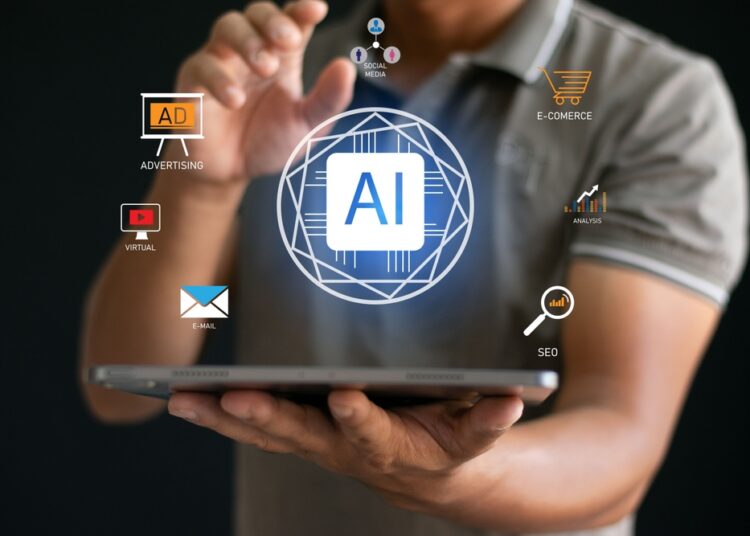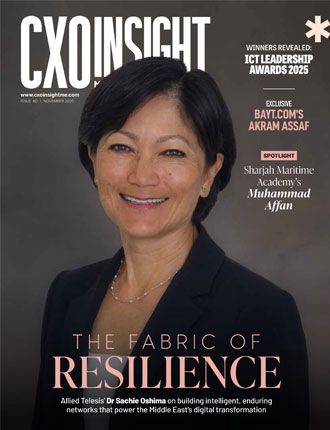Can you give us an overview of Recorded Future’s presence in the Middle East? Where are you seeing the strongest demand, and which sectors are driving adoption?
Recorded Future has been present in the Middle East region for the past eight years, with a team of over 30 employees providing services to over 150 active clients, with offices in Dubai and Riyadh.
As the threat landscape becomes more complex and persistent, threat intelligence is no longer a nice-to-have solution—it has become a critical component of any security operation centre. It enables organisations to proactively mitigate risks and investigate threats to stay ahead of an increasingly complex and evolving threat landscape. This shift in mindset is directly driving demand for our offerings.
We have seen strong demand across all sectors, with the BFSI and public sector driving the largest adoption, given their heightened risk exposure and regulatory requirements.
What threat trends and adversaries are most active in the region right now, and how is Recorded Future helping organisations address these evolving risks?
In the Middle East, we’re observing a range of evolving threat trends and adversarial activities that are shaping the regional cybersecurity landscape. One of the most prominent is influence operations, particularly by Iranian-linked actors. These groups are leveraging inauthentic websites and social media accounts to spread propaganda and push specific narratives, especially around regional tensions.
Cyber-espionage remains a significant concern, with groups like Stealth Falcon exploiting vulnerabilities—such as the recently disclosed zero-day CVE-2025-33053—in targeted campaigns against government and defence sectors in several Middle Eastern countries.
There has also been a noticeable uptick in cybercriminal and hacktivist activity, much of it tied to geopolitical flashpoints involving NATO and ongoing regional conflicts. These campaigns are often ideologically driven or financially motivated.
The escalating conflict between Iran and Israel has further intensified the cyber threat landscape, with military actions mirrored by increased cyber offensives and retaliatory attacks.
Key adversaries include Stealth Falcon, known for its targeted espionage campaigns; and the Handala Hack Team, which is affiliated with Iranian intelligence-linked groups.
To help organisations address these evolving risks, Recorded Future delivers real-time, actionable threat intelligence—both cyber and physical—that enables security teams to detect, prioritise, and respond to threats proactively. We help organisations quickly connect the dots between threat actors, their tools, tactics and procedures, and their targets, helping security teams neutralise critical threats before they happen.
We index intelligence from over one million global sources, enriched by expert analysis from our research division, Insikt Group, to provide comprehensive and contextual coverage of the threat landscape.
Threat intelligence has evolved significantly—what’s driving its shift from a supplementary tool to a core component of cybersecurity strategy?
Threat intelligence has become a critical tool for helping organisations defend against imminent threats and anticipate future security impacts. As the attack surface continues to expand rapidly and threat actors grow increasingly unrestrained, security teams need actionable intelligence to prepare and respond before threats reach their doorstep.
With the exponential growth of cloud-based platforms, SaaS applications, connected devices, and AI technologies, tech stacks are becoming larger and more complex. This leads to more data, more blind spots, and greater challenges for security teams—many of which are still viewed as cost centers rather than business enablers. Threat intelligence helps improve visibility across the attack surface, enabling organisations to identify what exposures threat actors are most likely to exploit and where their vulnerabilities lie.
Additionally, threat actors are becoming more motivated and unrestrained. Today’s adversaries operate globally, unhindered by jurisdictional laws, and are driven by financial, geopolitical, and other motivations. They have more resources than ever, and their operations are increasingly fuelled by AI. Their greatest advantage is that they only need to succeed once, while security teams—often working with limited resources—must succeed every time. With threat intelligence, organisations can stay ahead of today’s fast-moving attackers by better understanding their motivations and infrastructure, and preparing their defences accordingly.
What are the common challenges in operationalising TI, and how does Recorded Future help bridge the gap between raw data and actionable insight?
One of the most common challenges we see from customers looking to improve how they operationalise threat intelligence is that their previous intelligence wasn’t actionable enough. It often included too much noise, lacked context, and wasn’t specific to their organisation’s needs.
Recorded Future is powered by our Intelligence Graph. We collect data from over one million sources across the open web (including news, forums, and social media—essentially anything accessible on the internet), as well as from technical sources such as network intelligence, sandbox detonations, vulnerability data, malware intelligence, the dark web, our world-class research division—the Insikt Group—third-party feeds (e.g. ISAC feeds), and customer telemetry from security tools like CrowdStrike, SentinelOne, Splunk, and others. All of this is done automatically, in real time, and across multiple languages.
The Intelligence Graph uses advanced analytics and AI to organise and normalise these massive data sets into relevant, actionable insights. These insights are delivered through our products, integrations, and APIs, enabling customers to easily transform raw data into meaningful intelligence they can act on.
How are you enabling security teams at different maturity levels to fully utilise threat intelligence?
Each security team we work with is at a different stage in their threat intelligence maturity, and our goal is to help them get the most value out of their investment in Recorded Future. To support this, we offer a range of services tailored to their needs and capabilities.
Our Analyst on Demand service connects clients with our global network of intelligence professionals who provide custom reporting, deep technical analysis, and assessments of cyber and geopolitical trends. This ensures that organisations have direct access to expert insights to support their decision-making.
For teams that need more hands-on support, we offer Managed Monitoring, where Recorded Future experts act as an extension of the organisation’s security team. This approach helps customers grow and mature their security programmes regardless of their current capacity or maturity level.
Additionally, our Intelligence Services team delivers customised solutions designed to optimise intelligence workflows and enhance the overall effectiveness of an organisation’s security investment. This includes tailored enablement workshops, technology stack integrations, bespoke engagements, and data enrichment to support operational needs.
By offering flexible, expert-led services, we ensure that security teams—no matter their maturity level—can fully operationalise threat intelligence and strengthen their security posture.
There’s often a debate between investing in tactical versus strategic TI. How should security leaders in the region strike the right balance?
Security leaders should approach the tactical versus strategic threat intelligence investment balance through a structured, business-aligned strategy that recognises both their complementary nature and distinct value propositions.
Security professionals should start with strategic threat intelligence to establish a big-picture view. Without this high-level understanding, organisations often end up in a reactive cybersecurity stance, chasing everything that looks like a high risk that becomes a cycle that never ends. A security programme driven by strategic threat intelligence is more proactive and helps the business make more informed risk-based decisions.
While tactical threat intelligence is important and provides specifics around technical aspects of attacks, it shouldn’t be where organisations start nor it should be the only type of intelligence they use. The approach should establish formal intelligence programmes that allow tactical, operational, and strategic intelligence to be properly consumed, processed, analysed, and delivered to appropriate users.
With AI accelerating both cyberattacks and defence, how is Recorded Future integrating AI and ML into its Intelligence Cloud to stay ahead of advanced threats?
Recorded Future has long integrated AI into its core platform, particularly through our Intelligence Graph™, which leverages machine learning to organise and contextualise massive volumes of threat data. More recently, we’ve extended these capabilities with generative AI through Recorded Future AI, designed to help users analyse and report on emerging threats more efficiently.
One way we’re enabling this is through AI Sessions, which allow analysts to interact with the Intelligence Graph using natural language. This makes it easier to automate analysis and generate intelligence, helping reduce the impact of the security talent gap by enabling teams to turn data into actionable insights with greater confidence and speed.
In addition, Recorded Future AI enhances the intelligence cycle by streamlining both the analysis and reporting process. It enables automated report creation, making it easier to share intelligence across teams and stakeholders, and helping organisations focus their efforts on critical decisions and proactive defence.
Finally, AI also plays a key role in expanding threat coverage. By analysing vast datasets in real time, Recorded Future AI identifies key connections, emerging risks, and relevant context tailored to each organisation. The result is faster, more effective responses, supported by prioritised alerts and clear, contextual intelligence.
Looking ahead, what are your strategic priorities for the Middle East?
Our strategic priority in the region is to continue expanding and replicating the success we’ve had in Saudi Arabia across the rest of the Middle East. In particular, we aim to stay aligned with the local regulations and compliance requirements issued by national CERTs, cybersecurity authorities, and central banks. Additionally, we are focusing on expanding our coverage of threat actors targeting the region.










Discussion about this post